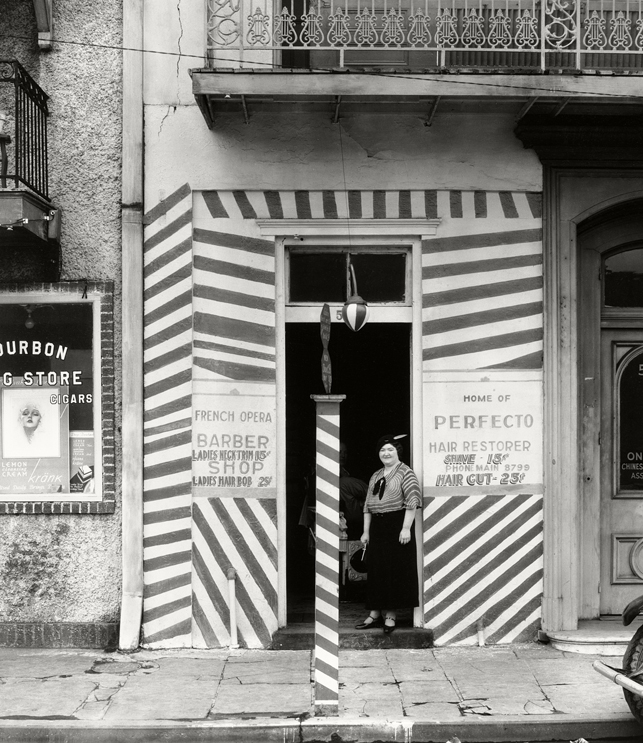The
progenitor of the documentary tradition in American photography, Evans had the
extraordinary ability to see the present as if it were already the past, and to
translate that knowledge and historically inflected vision into an enduring art.
American Photographs is still
for many artists the benchmark against which all photographic monographs are
judged.
 |
| Walker Evans, Sidewalk and Shopfront, New Orleans, 1935. The Museum of Modern Art, New York. |
With a 35mm
Contax camera strapped to his chest, its lens peeking out between two buttons
of his winter coat, Evans was able to photograph his fellow passengers
surreptitiously, and at close range. Although the setting was public, he found
that his subjects, unposed and lost in their own thoughts, displayed a
constantly shifting medley of moods and expressions—by turns curious, bored,
amused, despondent, dreamy, and dyspeptic. "The guard is down and the mask
is off," he remarked. "Even more than in lone bedrooms (where there
are mirrors), people's faces are in naked repose down in the subway."
In 1973, Evans began to work with the
Polaroid SX-70 camera the virtues of the camera fit perfectly with his search
for a concise yet poetic vision of the world. The unique SX-70 prints are the
artist's last photographs, the culmination of half a century of work in photography.
With this camera, Evans returned to several of his enduring themes, such as,
signs, posters, and their ultimate reduction, the letter forms themselves. Google has a
selection of these images and they can be found here; they are also available in a book.
 |
| Polaroid image of sign taken by Walker Evans, ~1973. Selected from Google Images. |
Jacob August Riis 1849–1914
Riis was
among the first photographers to use flash powder, which enabled him to
photograph interiors and exteriors of the slums at night. Flash was a German
innovation, by Adolf Miethe and Johannes Gaedicke, flash powder was a mixture of magnesium with potassium chlorate and some antimony sulfide for added stability; the powder was used in a pistol-like
device that fired cartridges.
Riis, Dr John Nagle, Henry Piffard and Richard Hoe
Lawrence using flash photography started documenting the slums. Their first
article was published in The Sun (New York) in February 1888 and the article
was illustrated by twelve line drawings based on the photographs of
"Gotham's crime and misery by night and day". Riis photographed the
slums for only 10 years and printed as half-tones or used as a basis for
engravings to illustrate his newspaper articles. The images taken during this
period became the foundation of Riis's later book entitled 'How the other half lives'.
 |
| Bandit's Roost, Mulberry Street by Jacob Riis, ~1888. Masters of Photography |
Riis was the first to realise the power of photographic documentation in the campaign for social reform. Plus because if his role as a police reporter he had access to some of the worst slums and because of his role as a journalist was in the ideal position to communicate these atrocities to a bigger audience. Riis developed a tersely melodramatic writing style and he became one of the earliest reformist journalists.
Reference sites
Museum of Modern Art, New York
Spartacus Educational Wikipedia
No comments:
Post a Comment